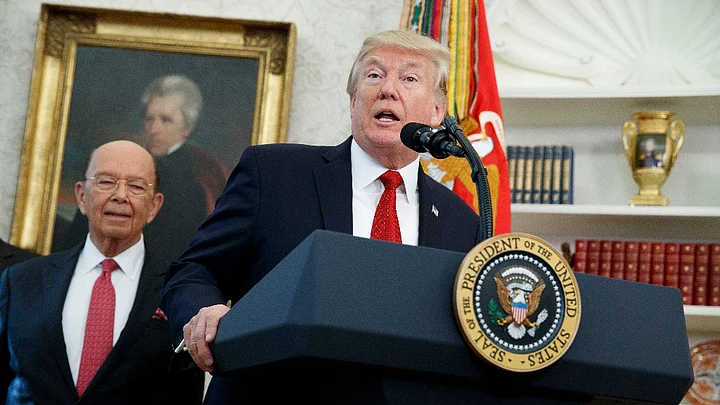President Donald Trump is nominating white men to America's federal courts at a rate not seen in nearly 30 years, threatening to reverse a slow transformation toward a judiciary that reflects the nation’s diversity.
So far, 91 percent of Trump's nominees are white, and 81 percent are male, an Associated Press analysis has found. Three of every four are white men, with few African-Americans and Hispanics in the mix. The last president to nominate a similarly homogenous group was George HW Bush.
The shift could prove to be one of Trump’s most enduring legacies. These are lifetime appointments, and Trump has inherited both an unusually high number of vacancies and an aging population of judges.
That puts him in position to significantly reshape the courts that decide thousands of civil rights, environmental, criminal justice and other disputes across the country.
The White House has been upfront about its plans to quickly fill the seats with conservatives, and has made clear that judicial philosophy tops any concerns about shrinking racial or gender diversity.
Trump is anything but shy about his plans, calling his imprint on the courts an “untold story” of his presidency.
“Nobody wants to talk about it,” he says. “But when you think of it... that has consequences 40 years out.” He predicted at a recent Cabinet meeting, “A big percentage of the court will be changed by this administration over a very short period of time.”
Advocates for putting more women and racial minorities on the bench argue that courts that more closely reflect the demographics of the population ensure a broader range of viewpoints and inspire greater confidence in judicial rulings.
One court that has become a focus in the debate is the Eastern District of North Carolina, a region that, despite its sizeable black population, has never had a black judge. A seat on that court has been open for more than a decade. George W Bush named a white man, and Barack Obama at different points nominated two black women, but none of those nominees ever came to a vote in the Senate.
Trump has renominated Bush’s original choice: Thomas Farr, a private attorney whose work defending North Carolina's redistricting maps and a voter identification law has raised concerns among civil rights advocates.
In recent decades, Democrats have consistently named more racial minorities and women on the courts.
But even compared to his Republican predecessors, Trump’s nominees stand out. So far, he has nominated the highest percentage of white judges in his first year since Ronald Reagan.
If he continues on his trend through his first term, he will be the first Republican since Herbert Hoover to name fewer women and minorities to the court than his GOP predecessor.
The AP reviewed 58 nominees to lifetime positions on appellate and district courts, as well as the Supreme Court, by the end of October. Fifty-three are white, three are Asian-American, one is Hispanic and one is African-American. There are 47 men and 11 women. Thirteen have won Senate approval.
The numbers stand in marked contrast to those of Obama, who made diversifying the federal bench a priority. White men represented just 37 percent of judges confirmed during Obama's two terms; nearly 42 percent of his judges were women.
Trump has moved aggressively to name new judges, getting off to a much quicker start than his predecessors. He has nominated more than twice as many as Obama had at this point in his presidency.
White House spokesman Hogan Gidley says Trump is focused on qualifications and suggests that prioritizing diversity would bring politics to the bench.
“The president has delivered on his promise to nominate the best, most-qualified judges,” Gidley said. “While past presidents may have chosen to nominate activist judges with a political agenda and a history of legislating from the bench, President Trump has nominated outstanding originalist judges who respect the US Constitution.”
(The article has been edited for length.)
(At The Quint, we question everything. Play an active role in shaping our journalism by becoming a member today.)
